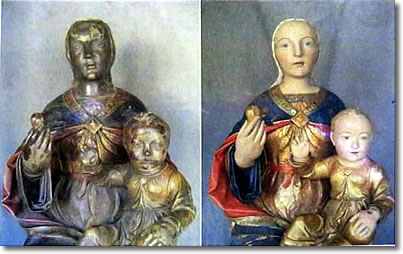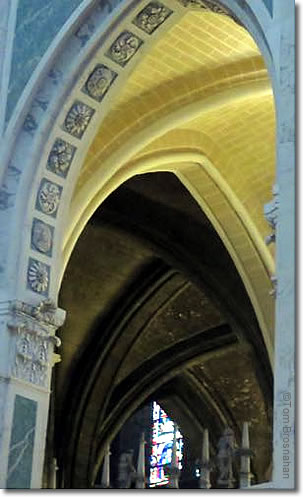 |
History of Chartres Cathedral, France | |
| Nearly 1000 years old, the splendid Cathédrale Notre-Dame de Chartres came close to complete destruction at least two times in its long history. | ||
|
|
|
The Cathédrale Notre-Dame de Chartres has stood at the center of the town of Chartres for nearly a thousand years. For most of that time, it was the heart and soul of the town. Pilgrims came from across Europe to marvel in its glory and to worship at the place of the Sancta Camisa, reputedly the tunic worn by the Virgin Mary at the time of the birth of Jesus. Artisans and merchants set up shop within its walled precincts in what was essentially a free-trade, tax-free zone, enlivening commerce and enriching the town and the church. But at least twice, the church was doomed to destruction, yet saved by the wisdom of two great men: French RevolutionIn keeping with the revolution's anti-clerical fury, the revolutionary government ordered the cathedral destroyed, but it was saved by the local architect tasked with its demolition. He cautioned that the pile of rubble would be so huge that it would block the main streets for years, causing great damage to the town's economy. The demolition was called off. World War IIIn 1939, when it became clear that Chartres could be subject to battle during World War II, all of the precious stained-glass windows were removed and packed for storage. Some were stored in the cathedral crypt (largest in France), others were shipped by rail to the safety of southern France. This preservation work was completed in an astonishing ten days. In August 1944, American forces approaching Chartres believed the cathedral's towers and steeples were being used by the enemy for artillery range-finding, and thus the building must be destroyed. Before the bombardment was ordered, Colonel Welborn Barton Griffith, Jr. volunteered to sneak through the German lines to see if this was true or not. He and his driver successfully evaded the enemy, climbed the towers of the cathedral, and confirmed that there were no enemy spotters. The bombardment order was rescinded. Sadly, Colonel Griffith was killed in action later that day. After the WarWith the return of peace, the windows were returned to the church. Inspection, repair (with new lead cames), re-assembly and re-installation work took three years. Controversial CleaningOver the centuries, dust, smoke from candles and incense, and other pollutants coated and darkened both the exterior and interior of the church, giving it a sombre atmosphere. In recent years, renovation of the exterior has been largely achieved, and the lengthy, pains-taking cleaning of the interior is under way. Some lovers of the cathedral find the cleaning a shock: parts of the dark building they've known all their lives are now light as new. It doesn't seem right to them. Others applaud the restoration, noting that the church's purest state is the lightness it had when it was new, and that much of the stone statuary was originally decorated in bright colors. The most intense controversy seems to surround Our Lady of the Pillar, a small statue of the Virgin Mary revered by many. Dark-colored for centuries, it is now lighter, as it was originally—but the change is extreme.
|
|
Light or dark, what's your preference? Our Lady of the Pillar...on her pillar.
|




